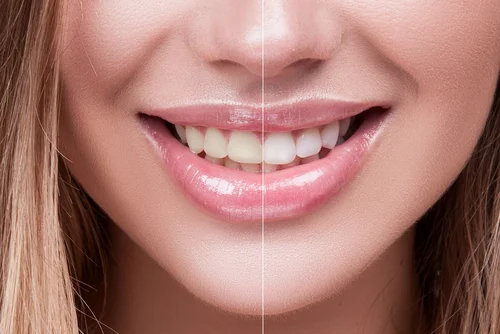
Introduction: Whitening vs. Bleaching—Why It MattersIf you’ve ever searched for “teeth whitening near me” or “dental bleaching near me,” you’re not alone. But here’s the catch: they’re not exactly the same thing.Understanding the distinction between these two procedures can help you make the right choice for your dental health and aesthetic goals. While both aim to enhance the brightness of your teeth, the science and purpose behind each are different.Let’s dive into the details so you can confidently walk into your next appointment knowing exactly what to expect. What is Teeth Whitening?
Key Differences Between Whitening and Bleaching Cosmetic vs. Chemical Process
Who Should Consider Whitening vs. Bleaching?
Clinical Process for Whitening Near You
How It Works
Teeth whitening refers to restoring the natural color of your teeth by removing surface stains. It’s a non-invasive cosmetic treatment focused on polishing the enamel.What It Targets
- Surface stains from coffee, tea, red wine, smoking
- Discoloration due to poor oral hygiene
- Dullness from plaque or tartar buildup
Common Whitening Methods
| Method | Process | Effectiveness |
| Polishing (during cleaning) | Removes surface stains | Mild |
| Whitening Toothpaste | Abrasive agents | Mild |
| In-Office Whitening | Strong cleaning agents | High |
What is Dental Bleaching?
Dental bleaching goes beyond surface-level stain removal. It uses peroxide-based agents to lighten the natural color of the tooth enamel, making teeth whiter than their original shade.The Role of Peroxide
Bleaching agents contain hydrogen peroxide or carbamide peroxide, which penetrate the enamel and oxidize stain molecules, resulting in a significantly lighter tooth shade.Types of Bleaching Treatments
- In-office bleaching (e.g., Zoom whitening)
- Custom take-home trays
- Laser-assisted bleaching
Professional vs. At-Home Bleaching
| Aspect | Professional | At-Home Kits |
| Supervision | Yes | No |
| Strength | High | Moderate |
| Speed | 1–2 sessions | Weeks |
| Cost | Higher | More affordable |
- Whitening: Removes surface stains
- Bleaching: Chemically alters tooth color
- Whitening: Brightens existing color
- Bleaching: Can make teeth up to 8 shades lighter
Safety and Side Effects
| Treatment | Possible Side Effects |
| Whitening | Minimal (rare sensitivity) |
| Bleaching | Tooth sensitivity, gum irritation |
| Condition | Recommended Treatment |
| Mild surface stains | Whitening |
| Deep stains or yellowing | Bleaching |
| Sensitive teeth | Whitening (gentler) |
| Need quick results | Bleaching (faster) |
- Consultation & Oral Exam
- Polishing & Cleaning
- Whitening Gel or Paste Application
- Rinse & Results Review
- Initial Assessment
- Gum Protection Barrier
- Application of Bleaching Gel
- Activation (via UV or LED light)
- Shade Matching & Aftercare Advice
Benefits of Consulting a Dental Professional
- Accurate diagnosis of stains
- Custom treatment plans
- Safe chemical application
- Reduced risk of sensitivity or damage
Myths About Whitening and Bleaching
- ❌ “Whitening and bleaching are the same.” → Bleaching changes natural color; whitening cleans it.
- ❌ “You can bleach teeth at home safely.” → Without professional guidance, you risk enamel damage.
- ❌ “More bleach means whiter teeth.” → Over-bleaching can cause permanent sensitivity.
- Look for clinics with verified reviews
- Check before-and-after case studies
- Schedule a consultation to determine stain type
Long-Term Results: What to Expect
| Factor | Influence on Longevity |
| Diet (coffee, wine) | Decreases duration |
| Oral hygiene | Increases duration |
| Smoking | Causes rapid discoloration |
| Professional touch-ups | Extends results |
